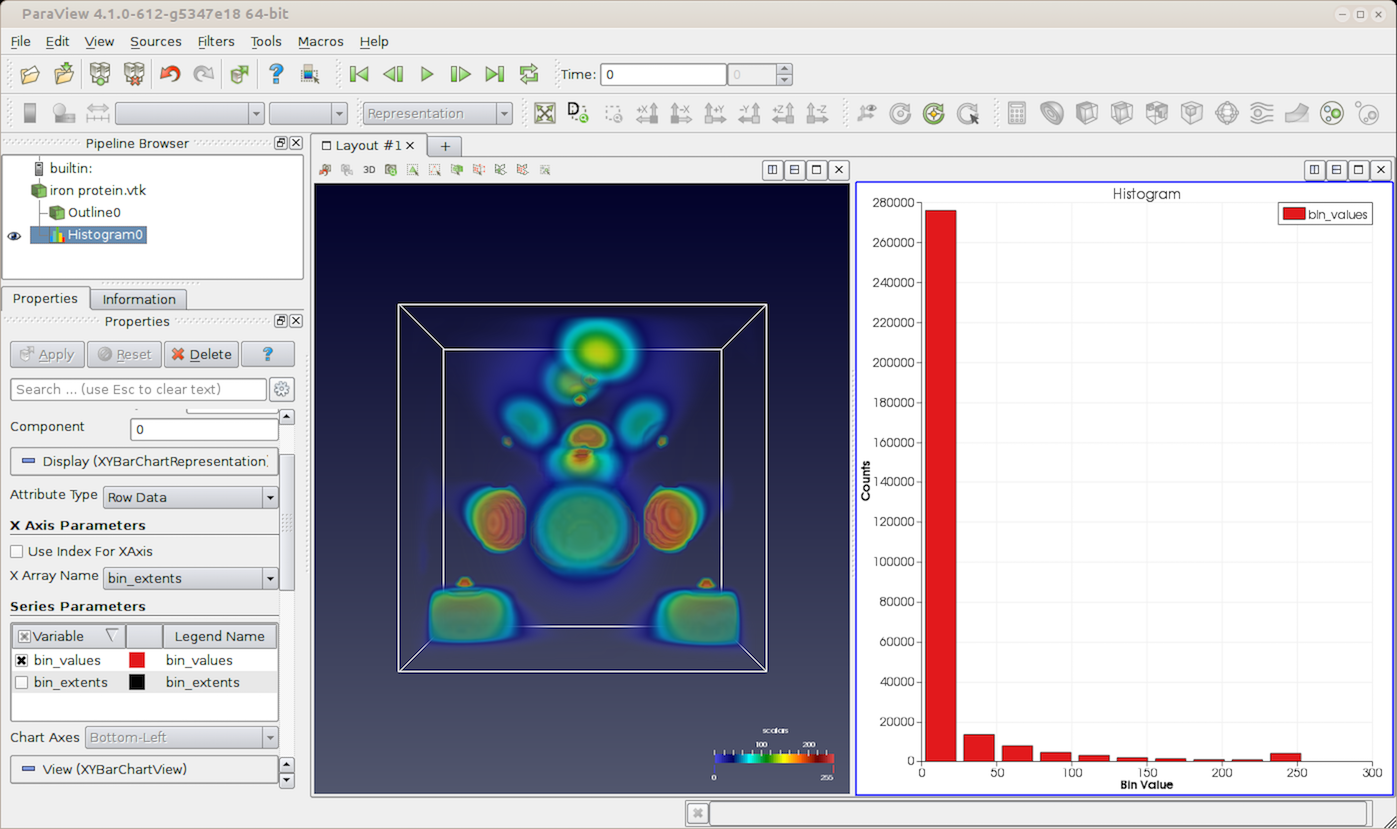The PVGeo Python package contains VTK powered tools for data visualizationin geophysics which are wrapped for direct use within the applicationParaView by Kitware or directly in a Python >=3.6 environment when pairedwith the PyVista Python package.These tools are tailored to data visualization in the geosciences with a heavyfocus on structured data sets like 2D or 3D time-varying grids.
This website hosts the documentation for the PVGeo Python package foundon GitHub and PyPI.
For a quick overview of how PVGeo can be used in a Python environment ordirectly within ParaView, please checkout the code snippets and videos on theAbout Examples.
Connections¶
This package provides many VTK-like algorithms designed for geoscientific dataformats and types to perform data integration and analysis.To ensure our users have powerful and easy to use tools that can visualize theresults of PVGeo algorithms, we are actively involved in the development ofPyVista: a toolset for easy access toVTK data objects and 3D visualization in Python.To learn more about pairing PVGeo with PyVista, please check out theexample Jupyter notebooks.
- PARCview is a real-time manufacturing data visualization and analytics toolkit developed by the end user, for the end user. Quickly transform critical data into useful information for timely decision-making and root-cause analysis.
- ParaView¶ Introduction¶. ParaView is an open-source, multi-platform data analysis and visualization application. ParaView users can quickly build visualizations to analyze their data using both qualitative and quantitative techniques.
Requesting Features, Reporting Issues, and Contributing¶
Paraview User Guide
Please feel free to post features you would like to see from this package on theissues page as a feature request. If you stumble across any bugs or crasheswhile using code distributed here, please report it in the issues page so we canpromptly address it. For other questions please join thePVGeo community on Slack.
About the Authors¶
Paraview
The PVGeo code library was created and is managed by Bane Sullivan,graduate student in the Hydrological Science and Engineering interdisciplinaryprogram at the Colorado School of Mines under Whitney Trainor-Guitton.If you would like to contact us, please inquire with info@pvgeo.org.
ParaView is written in C. Wrappers exists for Java, Tcl and Python. Pvpython is the Python interpreter that runs ParaView’s Python scripts in interactive or GUI mode. You can think of this as the equivalent of the paraview for scripting. Pvbatch is also a Python interpreter that runs Python scripts for ParaView for batch processing. I need to use either ParaView or VisIt post-processors packages rather than CFD-Post for a particular task. Having looked through both of these packages there is not a native CFX input, unlike Fluent, that I can find. What is the recommended way of getting CFX results in ParaView and VisIt?
It is important to note the project is open source and that many features inthis repository were made possible by contributors volunteering their time.Please take a look at the Contributors Page to learn more about thedevelopers of PVGeo.
Citing PVGeo¶
There is a paper about PVGeo!

If you are using PVGeo in your scientific research, please help our scientificvisibility by citing our work!
Paraview Literary Agency
Sullivan et al., (2019). PVGeo: an open-source Python package for geoscientific visualization in VTK and ParaView. Journal of Open Source Software, 4(38), 1451, https://doi.org/10.21105/joss.01451
BibTex:
Getting Started¶
To begin using the PVGeo Python package, create/activate your Python virtualenvironment (we highly recommend using anaconda) and install PVGeo throughpip:
Now PVGeo is ready for use in your standard python environment. To use thePVGeo library as plugins in ParaView, please see thedetailed explanation here.
Current Statistics¶
base | filter | macro | reader | source | writer |
|---|---|---|---|---|---|
12 | 33 | 8 | 17 | 5 | 6 |
Getting Started¶
To start interacting with the Server Manager, you have to load the “simple”module. This module can be loaded from any python interpreter as long as thenecessary files are in PYTHONPATH. These files are the shared libraries locatedin the paraview binary directory and python modules in the paraview directory:paraview/simple.py, paraview/vtk.py etc. You can also use either pvpython (forstand-alone or client/server execution), pvbatch (for non-interactive,distributed batch processing) or the python shell invoked from Tools|PythonShell using the ParaView client to execute Python scripts. You do not have toset PYTHONPATH when using these.
This tutorial will be using the python integrated development environment IDLE.PYTHONPATH is set to the following:
You may also need to set your path variable for searching for shared libraries(i.e. PATH on Windows and LD_LIBRARY_PATH on Unix/Linux/Mac). The correspondingLD_LIBRARY_PATH would be:
(Under WindowsXP for a debug build of paraview, set both PATH and PYTHONPATHenvironment variables to include ${BUILD}/lib/Debug and${BUILD}/lib/site-packages to make it work.)
When using a Mac to use the build tree in IDLE, start by loading theservermanager module:

Importing the paraview module directly is deprecated, although stillpossible for backwards compatibility. This document refers to the simple modulealone.
In this example, we will use ParaView in the stand-alone mode. Connecting to aParaView server running on a cluster is covered later in this document.

Tab-completion¶
The Python shell in the ParaView Qt client provides auto-completion. One canalso use IDLE, for example to enable auto-completion. To use auto-completion inpvpython, one can use the tips provided at TabCompletion.
In summary, you need to create a variable PYTHONSTARTUP as (in bash):
where .pythonrc is:
That is it. Tab completion works just as in any other shell.
